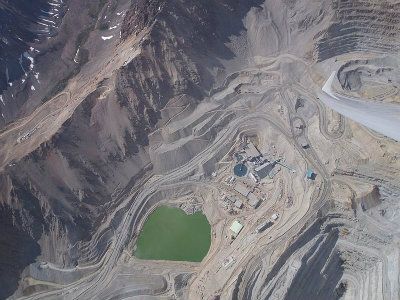Deserted copper mines to become clean energy facilities
Arizona ready plans to convert old copper mine into solar power and pumped-hydro storage facility

Green Energy Storage, a startup company in Arizona wants to convert an deserted open-pit copper mine in the south of Phoenix into a large-scale solar power and pumped-hydro storage facility.
Still in the elementary days of development, the project was first pitched to federal energy regulators just two weeks ago and could soon become a blueprint for conflict-free Big Solar.
Past industrial sites and degraded lands is a relatively untapped opportunity for developers to maneuver out of litigious environmental conflicts and tradeoffs associated with large-scale solar power in ecologically delicate areas.
In the Mojave Desert on the California-Nevada Border, BrightSource Energy recently completed its Ivanpah Solar Electric Generating System which was backed by Google, NRG Energy and the U.S. Department of Energy (DOE).
“Sunshot” program goal for 2050 could be reached entirely by solar energy projects on distressed and environmentally contaminated lands according to a recent report by the DOE’s National Renewable Energy Laboratory (NREL).
The19.7 million acres of distressed, degraded, and contaminated land is flat enough and contiguous enough to host about 2,000 gigawatts of large-scale solar power, or 2 terawatts.
One benefit of developing solar projects on distressed and contaminated lands, according to the NREL report, is that such projects is the ability to stimulate and renew local and state economies in areas without many productive land uses.
Another big advantage of the site is the access it will have to existing transmission lines owned by utility Arizona Public Service, which originally supplied power to the defunct mining facility’s rock-crushing operations.
There are as many as 250,000 abandoned mines are across the country suitable for clean energy development, according to the U.S. Environmental Protection Agency.

